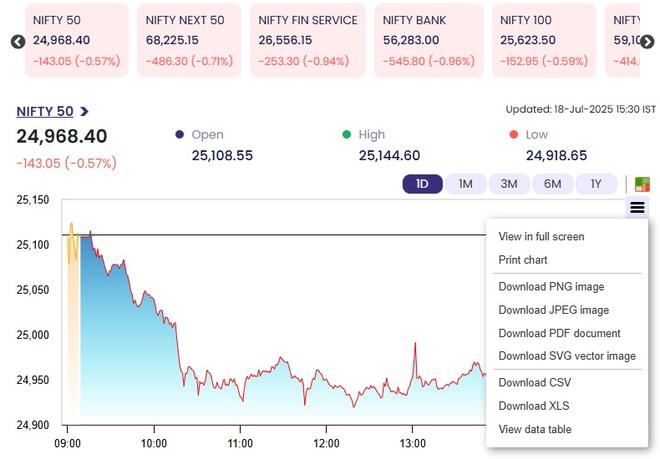BSE’s last major redesign was in 2018. While that revamp was mostly cosmetic, the exchange had long been known for proactively disclosing vital market information.
If you haven’t visited the BSE or NSE websites recently, you’re in for a pleasant surprise. Both exchanges have significantly upgraded the way they disclose market data and investor information.

NSE’s new site has larger charts, easy-to-use tabs, and intuitive design make navigation simple even for first-time users.
Today, these websites offer a wealth of real-time data, regulatory updates, and investor-centric insights. From index levels to stock quotes, market depth to corporate filings, circulars to trading holidays, derivatives data to market mood indicators, almost everything is accessible right from the homepage.
BSE’s last major redesign was in 2018. While that revamp was mostly cosmetic, the exchange had long been known for proactively disclosing vital market information. The website is now sleeker and optimised for all screen sizes. More recently, BSE has taken it a step further by offering AI-generated insights to help investors make more informed decisions.
For instance, when you view a particular stock, you’ll now see analytical messages like: “The scrip’s PE has remained above 50 for the last four quarters,” or “High-low price variation exceeded 100 per cent in the past six months and 150 per cent in the last 12 months.” Other alerts include “EPS is zero over the past four quarters,” “Low trading activity,” or “Exit may be difficult.” You’ll also find tags such as “Trading Restricted – On account of IRP as per IBC,” and information on encumbrances, ESM, GSM, ASM stages, and Add-on Price Bands, all clearly displayed.
NSE, traditionally more conservative in its approach, underwent a significant revamp last Diwali. The new site is data-rich and visually modern. Larger charts, easy-to-use tabs, and intuitive design make navigation simple even for first-time users. Earlier, even seasoned professionals found it difficult to locate key data on the old interface.
NSE’s updated policy now allows anyone to download intra-day data on indices and stocks. Historical corporate announcements are no longer limited to a one-year view. Ironically, BSE has moved in the opposite direction, limiting such access to a single year, unless the viewer manually changes the date range.
Tie ups for sites
Previously, BSE partnered with MarketMojo to display select fundamental and technical insights. That section has evolved into a more comprehensive “Analytics” page, showing a stock’s performance across various time frames up to 10 years, and comparing it with the Sensex and its respective sectoral index.
NSE, meanwhile, has tied up with Cogencis to provide extensive company and stock-specific data. Investors can access this via the iInvest portal directly from a stock’s page on the NSE website.
Both exchanges now offer detailed index composition data, including individual stock weightages — vital for analysts, fund managers, and serious market participants.
In fact, when compared to global exchange websites such as Nasdaq, NYSE or the London Stock Exchange, the Indian exchanges—both BSE and NSE — stand out for the depth and clarity of their offerings.
In financial markets, access to credible, real-time information is everything. Whether you’re a trader, long-term investor, analyst, or academic, the value of timely data is universal. On that front, our domestic exchanges deserve full credit.
Published on July 18, 2025